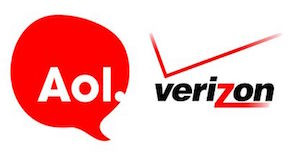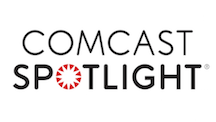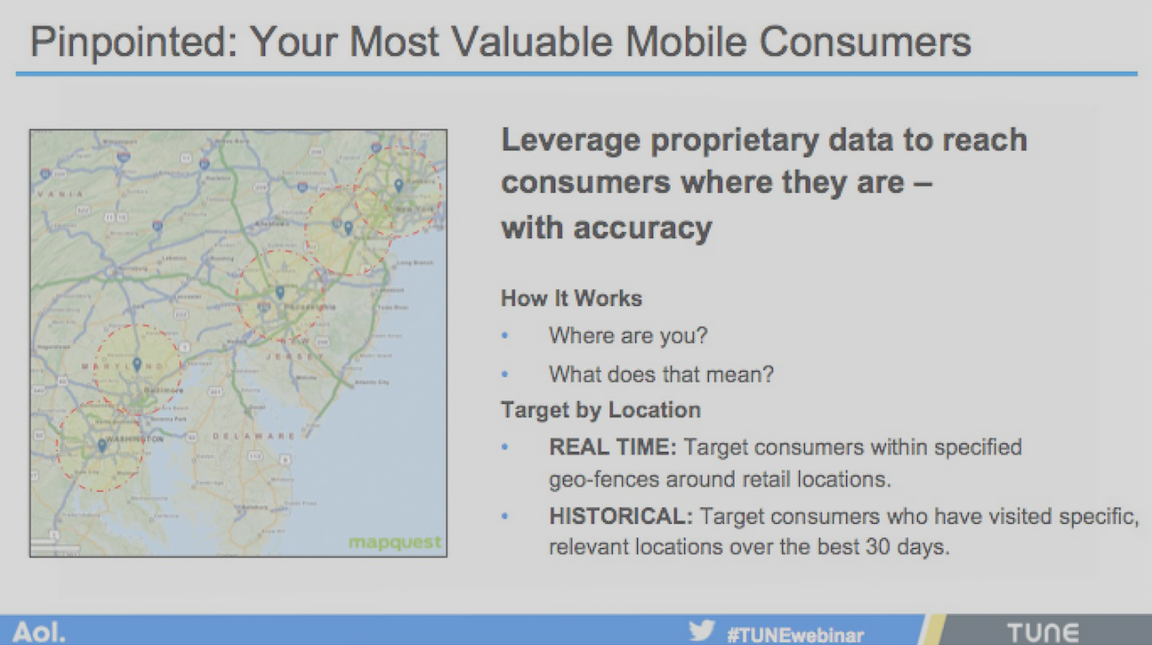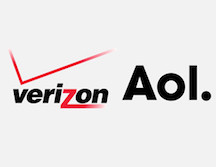Blog
Program Areas
-
Mary Gail Pezzimenti, Vice President of Content Creation, AOL "I’m excited to announce that we’ve eclipsed our 1-year anniversary of our award-winning Partner Studio by AOL (link is external) and share with you the momentum we’ve achieved so far and the direction we’re taking the team into for its second year. New to Partner Studio? Partner Studio by AOL is a team of strategists, creative executives, producers, editors, writers, and designers that partner with advertisers and help them build an entirely new level of publishing and branded content. Because of the success we’ve had so far with Partner Studio, we’re aggressively expanding our operations to nine markets, we’re launching a new social amplification offering and are introducing new Microsoft properties for our distribution platform. Successful Year Drives New Opportunities for Expansion Over the course of the past year, we’ve achieved great momentum by helping brands expand the way they drive engagement through creative content and publishing. Great Brands - To date, we’ve worked with 100 household brands globally ranging from automotive, consumer package goods, to financial services and more. Great Content at Scale - AOL’s owned and operated properties have a massive reach at 500M unique visitors and we deliver 5000+ pieces of content per day worldwide. This generates rich engagement data and insights on trends that enable us to develop great content, which we distribute at scale for our partners. Industry Recognition - The significant work we’ve been able to achieve through the blending of creative, tech and media has allowed us to garner a number of awards, including awards from the IAB, OMMA, and Digiday. Value of Open - As an industry leader that understands the importance of working and thriving in an open ecosystem, we’re developing partnerships with like-minded visionaries that allow us to provide the right solutions and value to our clients. Recently, we signed a deal with PepsiCo, where we will join forces with their Creator’s League to co-create a slate of content around music, pop culture, and health and wellness for distribution on AOL and Microsoft properties. International Market and Microsoft Property Expansion And there’s more! On the heels of the success Partner Studio has achieved in the US, UK, Canada, and France, AOL is expanding its reach with support in Brazil, Germany, Italy, Japan, and Spain. We’ve also grown to serve Microsoft properties – including MSN and Xbox – to a global addressable audience of over 500M users. Microsoft’s assets bring new immersive experiential and gaming branded content opportunities for Partner Studio customers. We Continue To Innovate -- Partner Studio Pronto Launches With Barefoot Wine We never stop innovating and growing! Our new social-first, event-driven native video solution, Partner Studio Pronto, is helping us build on this mantra. It allows marketers to run campaigns that simultaneously target users on a variety of AOL owned & operated properties and social media channels. As a result, advertisers will be able to deploy quicker, higher-impact campaigns across various platforms, including HuffPost, Facebook, Instagram, Twitter, YouTube and Tumblr, in an effort to drive greater engagement around key events or launches. The first-ever Pronto activation launched last week in partnership with Barefoot Wine (link is external). Together Barefoot Wine and AOL, both longtime supporters of the LGBTQ community, launched an original video, “Love For The Ages (link is external).” It’s a very timely, heart-warming video, launched in celebration of the anniversary of the day marriage equality was deemed constitutional in the United States --- Learn more at http://aol.it/29tspaI (link is external)
-
With AT&T AdWorks, advertisers can reach their target audiences and measure the response to ads on several screens. That means we glean insights on ads customers see on TVs, smartphones, and tablets. We offer the largest base of addressable TV advertising. We can also reach those same audiences online and over their mobile devices. The AT&T AdWorks product suite includes: Addressable TV Advertising, TV Blueprint, AddressablePlus, Interactive TV and Premium Digital Video Advertising (including Otter Media properties). For more information, visit please visit adworks.att.com.
-
We the undersigned privacy scholars support the proposal of the Federal Communications Commission to apply and adapt the Communications Act’s Title II consumer protection provisions to broadband internet access services. We commend the Commission’s much-needed efforts to carry out its statutory obligation and to protect the privacy of broadband internet access customers. We agree with the Commission’s proposal and affirm the importance of giving consumers effective notice and control over their personal information by strengthening consumer choice, transparency and data security. In particular, we support the Commission’s proposal to require affirmative consent (opt-in) for use and sharing of customer data for purposes unrelated to providing communications services. As scholars who have studied, researched, taught, and thought about privacy in depth from a variety of perspectives, we believe it is important that Americans have their privacy protected as they access, use and reap the benefits of the internet, the most fundamental communications network of our times. Privacy is a core human need, and citizens should be able to access the internet without the fear of being watched or of having their data analyzed or shared in unexpected ways. Privacy protections are a vital part of life for free citizens in a democratic society, and make society as a whole more vibrant, equitable and just. There are many ways our privacy is under assault in our age of fast-moving technology, which makes it all the more important that we protect that privacy in our bedrock communications system. We welcome innovation and technological progress but do not believe in the necessity to advance them at the expense of privacy. Our fundamental right to privacy should not be sold off for short-term gains, and thus we urge the Commission to adopt its proposed rule, which would significantly advance privacy online. [see signatories in attachment]
-
As the nation's largest cable service provider and it's largest internet service provider, we are in a unique position to provide both the data and the distribution to reach your target audience with otherwise unavailable granularity and proprietary access. As such, XFINITY.com is the foundation for authenticated targeting with proprietary 1st party data. It's the home base for a select audience of elusive premium cable/internet subscribers, who by definition have disposable income, value quality services, and loyally spend time with media via our platforms. XFINITY.COM IS THE FLAGSHIP WEB DESTINATION FOR 29+ MILLION MONTHLY UNIQUE COMCAST-NBCU SUBSCRIBERS TO ACCESS: Premium aggregated content News (powered by NBC News) Finance (powered by CNBC) Lifestyle (powered by The Today Show) Entertainment Sports Weather Premium video TV shows, movies, and events TV listings DVR management Email, voicemail, bill pay Home security From video pre-roll opportunities to in-banner video or strategically positioned banner ads, XFINITY.com offers marketers a robust community to make their brand presence come to life. XFINITY.COM FAST FACTS: 95% of display inventory is Above the Fold 88% of display inventory has only one ad unit on the page Over 25+ Million Monthly Unique Visitors* Over 1.7B Monthly Page Views* 15.6 Averate Minutes per Usage Day* 11.8 Average Monthly Visits per Visitor* 77.3 Average Minutes per Visitor* --- See the attached PDF for more information.
-
From apps to OTT to mobile devices, new advances in technology and content delivery have blurred the delineation between TV and digital video. TV is beginning to embrace and gain access to what has traditionally made digital so powerful – the application of precise data segmenting and measurement. TV buyers can now apply massive data sets to their strategy, understanding much more about a consumer than the traditional “age and gender” demographics. This webinar will aim to demystify the elusive Programmatic TV landscape while offering modern strategies for planning holistic TV and digital video advertising campaigns. Speakers will discuss the declining silos of ad delivery, measurement and optimization as well as the ROI benefit of leveraging cross-platform marketing initiatives. IAB and member companies Videology, AT&T AdWorks, and Adobe will explore the following questions and more. •How do digital strategies translate to TV buys? •What’s the state of advertising given the rise in streaming platforms? •Where does OTT video fit in the ‘digital video’ ecosystem? •And what exactly is programmatic TV and how evolved is it today? --- For more information, visit http://www.iab.com/events/tv-2020-clear-vision-future-tv-advertising/ (link is external)
-
Blog
Comcast leverages Adobe Primetime to streamline distribution and monetization of pay-TV service to millions of subscribers across desktops and devices
Every day, millions of Americans use Comcast to enjoy their favorite TV shows, surf the web, or connect with family and friends. Comcast is the largest mass media and communications company in the world, with 23 million cable subscribers. As the number of screens in a typical household grows, customers are increasingly interested in carrying their entertainment with them and watching television shows whenever and wherever they want. “We’ve seen a shift from vertically siloed services to services that combine digital cable, Internet, and television,” says Sree Kotay, chief software architect at Comcast. “Television isn’t just about a box in the living room anymore. Viewers want to watch their favorite shows on computers, game consoles, and mobile devices, and we need to deliver.” By providing consistent, high-quality services across devices with Adobe Primetime, Comcast can quickly reach new audiences and deliver more value for pay TV. Something for every device Every year, Comcast customers bring new devices to the digital ecosystem. When working with such a large variety of endpoints, having a consistent infrastructure is essential to scaling quickly. Standardizing on Adobe Primetime enables Comcast to easily deliver video to almost any screen. Comcast uses a unified Adobe Primetime digital rights management (DRM) and player framework to deliver studio-quality content. “Working with a common format through Adobe Primetime allows us to quickly bring our services to new devices,” says Allen Broome, vice president of IP video engineering at Comcast. Having established digital video workflows over the past 15 years, Comcast needed a solution that could easily fit within existing infrastructure. The modular approach makes Adobe Primetime more cost-effective compared to custom solutions, and enables Comcast to take advantage of new technologies faster. Adobe Primetime includes scalable, efficient DRM workflows that meet studio-mandated requirements for securing programming developed by content providers. By providing a consistent DRM solution across all video, Comcast can improve operational efficiency. “Developers don’t need to understand the complexities of DRM to apply it correctly, keeping the focus on delivering a superior user experience,” says Broome. Next-generation programming Comcast currently uses Adobe Primetime as the core of all of its IP-based video playback, including interactive TV experiences through its next-generation XFINITY X1 Platform. No matter how viewers access programming, they get the same great video features, which can include secondary audio options, closed captioning, or even alternate angles. The video platform built using Adobe Primetime also shows greater performance on devices, with fewer errors, faster startup times, quick downloads, and more consistent streaming experiences. The result has been a noticeable boost in customer satisfaction. “After implementing Adobe Primetime, the iTunes app rating jumped from 2.5 to 4 stars,” says Kotay. “We’re also seeing increased app and video engagement, indicating that we’re providing a stronger customer experience.” Expanding revenue streams Comcast is focusing on leveraging the analytics and monetization capabilities in Adobe Primetime to create tailored ad and content experience. “We see personalization as a key driver for future growth,” says Broome. “Adobe Primetime opens doors to deliver personalized advertisements and content to audiences.” The ad decisioning capability in Adobe Primetime is used to automate regional blackouts in which broadcasting contracts prevent live programming, such as sporting events, from being broadcast in certain regions. Adobe Primetime handles blackouts by seamlessly switching to alternate content. Working with dynamic blackout events eliminates the need to switch content for each region, creating efficiencies for engineers while improving compliance with carriage agreements. Comcast also uses Adobe Primetime to expand into new service areas. For example, the company can reach new young audiences with its Xfinity on Campus service, which will be available on select university campuses. “To continue to stay on top, we need to follow our audiences wherever they go,” says Broome. “Adobe Primetime gives us a unified video platform that helps us quickly and easily bring high-quality video to new audiences and devices.” --- More information available in the attached PDF. -
Comcast Spotlight invests millions of dollars in research to help businesses identify and reach audiences based on demographic, psychographic and geographic data. Overview Information is vital to the success of any business, and Comcast Spotlight has the resources to help ensure every business has a marketing plan built on a solid foundation that delivers results. From traditional, interactive and on- demand television to digital advertising, we crunch the numbers and provide the insights that set us apart as true partners in local media. Our tools include subscriptions to research services like Nielsen, Scarborough, comScore and Kantar, all backed by a dedicated team of professionals committed to helping advertisers plan and execute multi-screen marketing plans. We dig deep, conducting detailed research about each client’s unique needs, recommending a custom media mix that maximizes return on investment. Features Quantitative data from sources like Nielsen, comScore and Kantar provide a precise analysis of media use (television viewing, online activity and more). Qualitative data from sources like MRI, Simmons, Scarborough and Blue and provide detailed aggregate information about consumers, geographies and social media activity. Benefits Provides strategic and tactical insights into the media and marketing planning process. Identies general demographic, psychographic and geographic makeup of ideal audiences. Offers insights down to the ZIP code level to identify highest potential opportunities for advertisers. --- For more information see the attached PDF and visit http://bit.ly/292dTcv (link is external)
-
Today, most customers move between devices and channels with great fluidity. Customers may research a product on their mobile device, but go and complete a purchase on their desktop computer. According to research from CMO Club, 85% of marketers say their biggest challenge to providing seamless cross-channel marketing is customer data that is unavailable or spread across multiple sources. The Oracle ID Graph helps marketers connect identities across disparate marketing channels and devices to one customer. Powered by the Oracle Marketing Cloud (link is external) and Oracle Data Cloud (link is external), the Oracle ID Graph seamlessly pulls together the many IDs across marketing channels and devices that comprise a given person, enabling marketers to tie their interactions to an actionable customer profile. This ID enables the marketer to orchestrate a relevant, personalized experience for each individual across marketing channels. Get better Cross-Channel orchestration. Marketers have valuable data inside of their CRM, email marketing and marketing automation tools from Oracle’s Cross-Channel Marketing solutions. Through the Oracle ID Graph, customer data residing inside CRM, marketing automation or email systems can be onboarded securely and anonymously into the Oracle Data Management Platform. There, through integrations with media providers, marketers can deliver paid media, search, social and display advertising to those customers that’s more aligned with the emails sent to those customers. Improve Cross-Channel targeting. Many customers today prefer to research a potential purchase on one device, but purchase on another. With the Oracle ID Graph, customers are more likely to receive a relevant experiences as they move between these devices and connect with the right product or service. For example, if a customer uses a desktop browser to search for flights to New York, an airline marketer can ensure a relevant ad appears for a flight promotion when that same customer switches to their mobile device. This results in a higher conversion rate and more optimized budgets. --- For more information visit http://bit.ly/1HtID0o (link is external)
-
Blog
Consumer, Privacy Groups decry failure to protect consumer facial and biometric privacy by Commerce Department and industry lobbyists
Statement on NTIA Privacy Best Practice Recommendations for Commercial Facial Recognition Use
Alvaro Bedoya, Center for Digital Democracy, Common Sense Kids Action, Consumer Action, Consumer Federation of America, Consumer Watchdog, Privacy Rights Clearinghouse, and U.S. PIRG The “Privacy Best Practice Recommendations for Commercial Facial Recognition Use” that have finally emerged from the multistakeholder process convened by the National Telecommunications and Information Administration (NTIA) are not worthy of being described as “best practices.” In fact, they reaffirm the decision by consumer and privacy advocates to withdraw from the proceedings. In aiming to provide a “flexible and evolving approach to the use of facial recognition technology” they provide scant guidance for businesses and no real protection for individuals, and make a mockery of the Fair Information Practice Principles on which they claim to be grounded. That is not surprising. It was clear to those of us who participated in this process that it was dominated by commercial interests and that we could not reach consensus on even the most fundamental question of whether individuals should be asked for consent for their images to be collected and used for purposes of facial recognition. Under these “best practices,” consumers have no say. Instead, those who follow these recommendations are merely “encouraged” to “consider” issues such as voluntary or involuntary enrollment, whether the facial template data could be used to determine a person’s eligibility for things such as employment, healthcare, credit, housing or employment, the risks and harms that the process may impose on enrollees, and consumers’ reasonable expectations. No suggestions are provided, however, for how to evaluate and deal with those issues. If entities use facial recognition technology to identify individuals, they are “encouraged” to provide those individuals the opportunity to control the sharing of their facial template data – but only for sharing with unaffiliated third parties that don’t already have the data, and “control” is not defined. Just as there is nothing that “encourages,” let alone requires, asking individuals for consent for their images to be collected and used for facial recognition in the first place, there is nothing that “encourages” offering them the ability to review, correct or delete their facial template data later. The recommendations merely “encourage” entities to disclose to individuals that they have that ability, if in fact they do. Further, if facial recognition is being used to target specific marketing to, for example, groups of young children, there is no “encouragement” to follow even these weak principles. There is much more lacking in these “best practices,” but there is one good thing: this document helps to make the case for why we need to enact laws and regulations to protect our privacy. If this is the “best” that businesses can do to address the privacy implications of collecting and using one of the most intimate types of individuals’ personal data – their facial images – it falls so short that it cannot be taken seriously and it demonstrates the ineffectiveness of the NTIA multistakeholder process. -
AOL is assimilating Verizon’s and Microsoft’s most valuable consumer data by the end of the year to give marketers more advanced targeting potential to up to 500 million users, according to AOL Platform’s CTO Seth Demsey. The newly formed advertising triumvirate of Verizon, AOL and Microsoft will be built on a foundation of data that many think could be a viable third option behind Facebook and Google in terms of reach and targeting potential. By the end of the year, AOL will have its data platform running, and it will access key user information — first-party data on Verizon customers and Microsoft users — for brands to use for highly targeted ad campaigns, Demsey said. “It’s a different ballgame because of the level of depth of the relationship Verizon has with customers,” Demsey said. “We know things like addresses, credit cards, phone numbers.” These are “real, authenticated people,” which has a big impact on being able to measure the effectiveness of ads, he said. Verizon bought AOL earlier this year for $4.4 billion, and one of the most important steps of the merger is to combine the ad technology of both platforms. Verizon is integrating a program called Precision Market Insights into AOL’s recently transformed ad platform, called AOL One. “That is huge,” said Sean Black, SapientNitro’s North America media services lead. “You can’t even begin to assume the amount of data Verizon has between its wireless network and broadcast TV with FIOS.” AOL also said that Microsoft’s proprietary data would be entered into its domain as well. Verizon has been making changes to its precision marketing program (link is external) since it bought AOL, and sources have said it will operate more like a “walled garden,” which means it would tightly control how brands and advertisers can leverage its valuable data, especially through third parties. Verizon Wireless has more than 100 million subscribers, and its FIOS Internet and TV service runs to about 7 million households. Those Verizon customers are just the start of the reach of the new advertising ecosystem that is taking shape. Verizon also bought Millennial Media, a mobile ad network with hooks in 65,000 apps. In all, AOL is now claiming that it can reach 500 million users, which is up from before the deal when the company touted 100 million users. AOL is giving advertisers the lay of the land like this: “We’re not just looking at digital display advertising,” Demsey said. “We’re looking at video, looking at mobile, looking at social, search, linear TV, over-the-top [digital TV].” --- For more information visit http://bit.ly/1LxXwDD (link is external)
-
New York – May 16, 2016 – SintecMedia today announced that OnBoard, the industry leading programmatic platform, will be fully integrated with HighYield, a programmatic tech ad platform from Visible World, a Comcast Platform Services company. This deal will allow SintecMedia‘s network customers utilizing OnBoard to expand ad sales offerings from traditional, unit-based products into innovative, audience-based products that span TV & digital platforms and enable High Yield customers to benefit from a valuable inventory to be offered via networks using OnBoard. The combination of SintecMedia‘s OnBoard with Visible World‘s HighYield will easily enable OnBoard clients to selectively provide their TV ad inventory to Programmatic TV selling via users of the HighYield platform, including Programmatic TV leader AudienceXpress, as well as established agency media buying systems such as Strata. OnBoard’s efficient, end-to-end trading process integrates internal sales and fulfillment systems with intelligent work-flow automation for coordinating teams, departments and buyers. Together, these platforms will unleash undervalued inventory making them more broadly available for Programmatic TV selling using advanced audience data and allowing buyers and sellers to realize additional incremental value. “For the first time, our clients have the tools to maximize the promise of Programmatic Ad Sales. With OnBoard, the entire ad sales ecosystem is connected and communicating to bring new revenue opportunities in an efficient, real-time application, “ said Amotz Yarden, CEO, SintecMedia. ”Bringing together OnBoard with HighYield and Strata is another step in providing our clients with the most complete, robust platform for maximizing their ad sales business.” The CEO of Visible Word, Seth Haberman, added “By integrating HighYield platform with SintecMedia, we are making it possible for broadcasters to make it easy to benefit from the growth in demand for Programmatic TV advertising .” --- For more information visit http://bit.ly/1rlGNu3 (link is external)
-
Blog
AT&T: See databrokers they use in attached doc. "Best Practices"
How to optimize results on this groundbreaking platform
Addressable TV was launched in 2012 by DIRECTV. Multi Video Program Distributors (MVPDs), such as DIRECTV, are currently the only entities offering true Addressable TV due to required access of both the video distribution system and data center. MVPDs offer Addressable TV in the ad breaks they receive from program networks, such as ESPN and CNN, as part of their carriage agreements. Currently, four MVPDs (DIRECTV, DISH, Comcast, and Cablevision) offer Addressable TV and that footprint is set to grow to 40 million households by end of year1. With AT&T’s acquisition of DIRECTV in 2015, AT&T AdWorks now has the largest national addressable platform, offering Addressable TV advertising across nearly 13 million DIRECTV households out of the 26 million combined DIRECTV and U-verse TV households. In a recent study conducted by Adweek and AT&T AdWorks, a survey of leading marketers indicated that current TV buying (without addressability) isn’t meeting marketing needs and there is both frustration and a desire to reach relevant audiences more effectively. Nearly all respondents agree that there is too much waste associated with TV and that traditional methods of measurement are outdated. As a result, over 80% are shifting TV dollars into digital for greater accountability and effectiveness. However, nearly all agree that TV would be more attractive if they “could target more finely.” As the leader in Addressable TV, AT&T AdWorks has run hundreds of campaigns across a wide array of advertisers and verticals. The purpose of this white paper is to share the learnings from those experiences to inform future campaigns and advertisers – and to demonstrate that TV still remains the most impactful advertising medium made even more effective by addressability. --- For more information, see the AT&T White Paper PDF. -
AT&T AdWorks provides an intelligent feedback loop helping you quickly recognize, measure, and evaluate a customer’s needs as they journey from prospect to buyer down the sales funnel. From top-level activities such as driving brand awareness and measuring brand health, to mid-funnel activities like reaching viewers on multiple forms of media, AT&T AdWorks can help you engage and interact with your customers at each stage – transitioning them closer to purchase. Addressable Case Studies Whether you are looking to drive sales lift or ROI, grow brand awareness or measure effectiveness of a campaign we can provide that accountability with proven results across all categories. Healthy-living CPG company (link is external) Leading Luxury Automaker (link is external) Travel and Hospitality (link is external) Finance and Banking (link is external) Insurance Carrier (link is external) Popular TV Show (link is external) --- For the full article, visit http://soc.att.com/1UwSkhE (link is external)
-
Blog
AT&T AdWorks Announces Results of Cross-screen Addressable Advertising Trials with Advertisers
AT&T AdWorks and Opera Mediaworks Connected Walmart, AT&T and Other Advertising Trial Participants With their Target Consumers Across TV and Mobile
The results are in. AT&T1 AdWorks, the nationwide leader in addressable TV advertising, conducted a series of cross-screen addressable2 TV and mobile advertising trials with multiple Fortune 100 companies including Walmart and AT&T. We conducted the trials in collaboration with Opera Mediaworks, one of the world's largest mobile advertising and marketing platforms, so advertisers could reach their target audiences across TV and mobile devices. Advertisers were able to measure results on a variety of key performance indicators from brand/message favorability to sales. "These results show the immense value of cross-screen addressable advertising. They also display our innovative audience targeting and measurement capabilities across screens," said Rick Welday, president, AT&T AdWorks. "We can deliver ads to a brand's target audience. And we can measure how addressable advertising performs across platforms. This is a huge opportunity for brands." AT&T Mobility We tested the impact of cross-screen addressable advertising on our own products and services. We served addressable ads for AT&T's mobility service and measured the effect addressable advertising had on bringing in new customers. We delivered these ads to a subset of DIRECTVcustomers who did not have an AT&T mobility service registered at the same address. Our addressable TV advertising results showed a 19% lift in sales. There was an additional lift in sales to nearly 27% when a consumer received the same addressable ad on both their TV and mobile devices.3 Walmart The cross-screen addressable advertising trial for Walmart targeted a custom audience, and held out a control group. When comparing treatment and control groups, the cross-screen addressable campaign showed a statistically significant lift in both brand and message favorability. Luxury Automotive Manufacturer The luxury auto campaign focused on driving sales for a specific high-end model. We targeted households anonymously identified as in the market for a luxury car. Through the trial we saw an 87% lift in sales for the luxury model among households that saw the addressable ad on both TV and mobile.4 Cross-screen addressable advertising is changing the way advertisers connect with audiences. AT&T AdWorks can help advertisers reach the right consumer with the right message. And advertisers can reach consumers on the right device when they are most interested in engaging with the brand. --- For the full article, visit http://prn.to/1UB9ldh (link is external) -
Our industry-leading tech & data platforms empower publishers & marketers to transact transparently at scale, reaching audiences across the entire mobile ecosystem. We offer a full range of managed services & programmatic solutions, including an open exchange, private marketplaces & direct buys. 9b+ Ad Requests Per Day 20+ 3rd Party Data Partner Integrations 65k+ Apps & Sites on Our Platform ONE by AOL: Mobile We simplify a complex mobile advertising ecosystem by seamlessly connecting marketers, publishers & developers Mobile Ad Exchange Exchange Millions of impressions are bought & sold each day on our exchange; that's programmatic at scale --- For more information, visit http://bit.ly/1r2LNDz (link is external)
-
Verizon uses Oracle Marketing Cloud to achieve massive scale through automated communications triggered by customer behaviors when interacting with this broadband and communications company. --- Create Cross-Channel Customer Experiences with Oracle Responsys It’s easy to make data from disparate sources useful, create precisely targeted audiences, and then empower customers to determine their own next experience by interacting with them in near real-time. Oracle Responsys empowers marketing teams with the tools to deliver the relevant, engaging experiences their customers demand across devices, channels, and lifecycles. How does Oracle Cross-Channel Orchestration help digital marketers manage cross-channel experiences? Oracle helps marketers design cross-channel customer experiences that are personalized and sophisticated. With one powerful yet easy to use platform, Oracle brings deeply integrated, best-in-class technologies and industry-leading insights together to help marketers realize their goals. What makes Cross-Channel Orchestration different than the other platforms? Oracle delivers innovative features that matter to marketers, is supported by unparalleled infrastructure, and provides unique solutions that yield incredible—and incredibly achievable—results. --- For more information, visit http://bit.ly/1UifJGh (link is external)
-
Blog
AT&T to Enhance Next-Generation Video-Delivery Platform with Acquisition of Quickplay from Madison Dearborn Partners
AT&T plans to acquire Quickplay Media, Inc., a leader in powering over-the-top (OTT) video and TV Everywhere services, from Madison Dearborn Partners. The acquisition builds on the companies’ existing relationship. Quickplay’s platform currently supports AT&T’s U-verse TV Everywhere offering and will support the streaming offers (link is external) — DIRECTV Now, DIRECTV Mobile and DIRECTV Preview (link is external) — that AT&T plans to introduce later this year. These new plans will let viewers stream DIRECTV (link is external) content over the Internet to virtually any device. “Our strategy is to deliver video content however, whenever and wherever,” said John Stankey (link is external), CEO, AT&T Entertainment Group. “Quickplay's multitenant IP distribution infrastructure, combined with AT&T's leading scale in IP connected end points, will allow us to host and distribute all forms of video traffic. We intend to scale and operate an industry-leading video distribution platform, and viewers will get the high-quality online video viewing experience they desire. “We’ve spent more than a decade developing an advanced technology and service platform that can deliver premium video content to any device and over any network. Our solution is highly automated and scalable. With AT&T, we’ll have the resources we need to further scale, grow the business, and continuously enhance that platform,” said Wayne Purboo, founder and CEO, Quickplay. “Our team is proud of what we’ve built so far and excited to join the AT&T family. This combination will help us power the next generation of video services.” AT&T plans to retain Quickplay’s more than 350 employees and contractors. “Quickplay’s talented team of people is critical to our success,” Stankey said. “Their knowledge and skills are a key part of executing our video strategy.” --- See more at: http://about.att.com/story/att_to_enhance_next_generation_video_delivery... (link is external) -
Powering real-time auctions, private marketplaces & programmatic direct deals, ONE by AOL: Mobile connects leading brands to premium mobile app & web publishers at scale on a global basis. Features Premium Liquidity High-quality inventory & premium demand to drive a highly liquid exchange Control Buy & sell impressions how you want to ensure ultimate control over your mobile business Transparency Access to transparent, targetable dimensions on billions of impressions Private Marketplaces Data-rich impressions. Exclusive brands & publishers. High-quality, brand-safe content. Just a few of the reasons to consider buying or selling inventory in a private marketplace. Open Packages Align your brand with high-quality content & premium publishers. Easily find and target premium and hard-to-find supply by taking advantage of one of our open inventory packages or let us custom curate one based on your unique requirements. Brand Safety From brand-safe inventory to ad verification & powerful configuration tools, we are laser-focused on protecting your brand (link is external). Contextual & privacy data lets buyers make smart purchase decisions while rigorous ad quality & fraud detection tools provide publishers full control. Data-Rich Targeting Reach the users you want with impression-level decisioning & data-rich targeting. Impressions are more valuable to buyers & sellers when enriched with data—your data, our data or data from one of our many partners. Real-time Reporting & Tools Plan, monitor & manage your mobile advertising with our in-depth, visually rich reporting suite. With our robust set of reporting & configuration tools, buyers & sellers can manage performance across a variety of KPIs & set preferences related to white/blocklists, privacy controls & more. ----- Learn more at http://bit.ly/244AXKp (link is external)

















